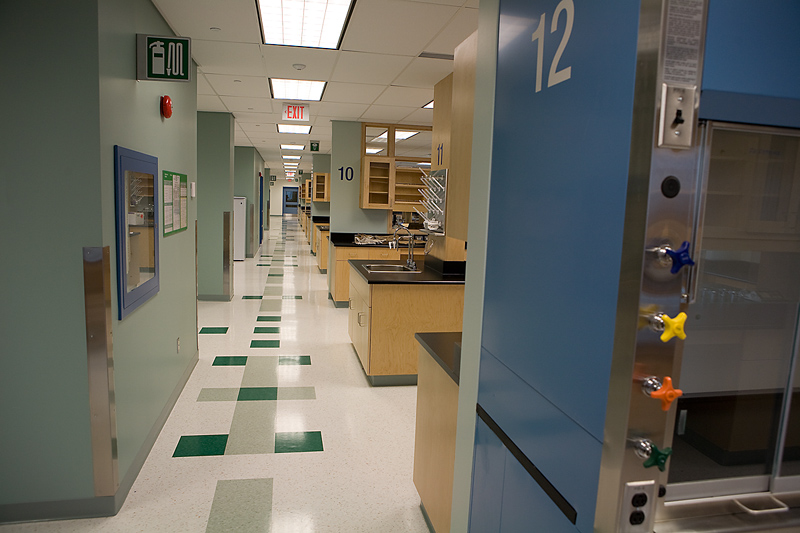
MONDAY, May 5, 2014 (HealthDay News) — A team-based procedure for removing difficult or large precancerous colon polyps is effective and eliminates the need to take out part of a person’s colon to reduce their cancer risk, a small clinical trial shows.
In the procedure, a surgeon manipulates the colon from outside the organ so that a second doctor can get to the hard-to-reach polyp and remove it from inside the colon via colonoscopy.
This team procedure, called “laparoscopic-assisted colonoscopy with polypectomy,” eliminates the need for a surgeon to remove the entire section of the colon that contains the polyp, a procedure called “laparoscopic hemicolectomy.”
A clinical trial comparing the new and old procedures found that laparoscopic-assisted colonoscopy is as safe and effective as surgery to remove part of the colon, but results in shorter hospital stays and less harm done to patients, said lead researcher Dr. Jonathan Buscaglia.
“The advantage is that the polyp is removed while sparing that section of colon, which is important to patients,” said Buscaglia, director of advanced endoscopy at Stony Brook University College of Medicine, in New York. “Patients often can suffer from diarrhea or abnormal bowel movements when they have part of their colon removed.”
Buscaglia was to present his team’s findings Monday at the Digestive Disease Week meeting, held in Chicago.
Colon cancer has decreased about 30 percent in recent years, mainly because doctors are eliminating the risk by finding and removing precancerous polyps during routine colonoscopies, Buscaglia said.
In a colonoscopy, a doctor scans the inside of a person’s colon using a thin, flexible tube inserted through the anus. A small video camera transmits images of the colon, and if a polyp is found then surgical tools can be sent through the tube so doctors can remove the growth on the spot.
But sometimes these polyps are either very large or located in a fold or bend of the colon, making it tough for doctors to remove them during a colonoscopy, Buscaglia explained.
In those cases, the alternative has been to remove the section of the colon that contains the polyp, and then sew the colon back together.
Buscaglia and his colleagues decided to test what they felt would be a better and less invasive way to get at these polyps.
In their team procedure, a surgeon makes a tiny incision in the abdomen and uses a thin, illuminated tube called a laparoscope to move the colon around from the outside of the organ.
By manipulating the organ from the outside, they can move the polyp into a better position for removal from within by a second doctor who is performing a simultaneous colonoscopy.
The new clinical trial involving 28 patients found that those who underwent the team procedure had an average hospital stay of 2.5 days, while those who had a section of colon removed spent four days in recovery.
Patients treated with the team procedure also lost less blood and required less IV fluid in the operating room. The procedure itself also took much less time, 95 minutes on average compared with 179 minutes for removing part of the colon.
After surgery, team-treated patients were able to resume eating solids foods in less than two days, while the surgical patients had to wait almost four days.
This new procedure could prove very cost-effective, even though it requires two doctors instead of just one, Buscaglia said.
“Cost, when it comes to operations, is less related to what you’re doing in the operating room than how much operating time you’re utilizing,” he said. “It’s also not so much the operation itself, but it’s the length of the hospital stay. All of those things go into a heavy cost for someone who has a three-hour surgery and then stays in the hospital for three to five days following surgery.”
Because this study was presented at a medical meeting, the data and conclusions should be viewed as preliminary until published in a peer-reviewed journal.
Buscaglia and his team plan to conduct a larger, multi-center investigation to confirm these findings.
Dr. Fadi Braiteh, a Las Vegas oncologist not involved with the study, said such follow-up trials are needed before doctors can begin using this team approach with confidence.
“The use of laparoscopy to assist the operator during colonoscopy for successful resection of the polyp could be a safer and less aggressive measure,” said Braiteh, with Comprehensive Cancer Centers of Nevada, a US Oncology Network affiliate. “These are interesting results, but a larger multi-institutional study is warranted to validate and precisely measure these findings.”
Another expert said this new approach appears to have some merit.
“I think it’s a very good approach. It’s reduced the amount of hospital stay, and it’s easier on the patient,” said Dr. Gregory Haber, chief of gastroenterology at Lenox Hill Hospital, in New York City.
But before calling in a surgeon to collaborate, a doctor ought to consider sending the patient to a physician who is expert at removing tough polyps through colonoscopy, he added.
“If you are not used to doing difficult polyps, rather than thinking about doing a surgery, you should consider sending it to an expert in that area,” Haber said. “This is not necessarily what you have to do when you have a polyp that you have problems with, because you also have the option of going to an expert in polyp removal.”
More information
For more about colonoscopy, visit the American Cancer Society.
Copyright © 2025 HealthDay. All rights reserved.

